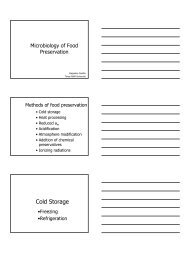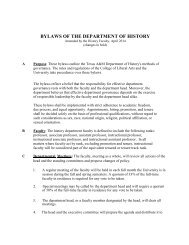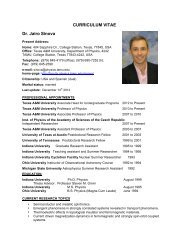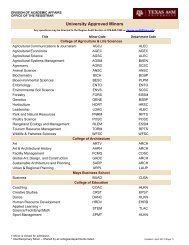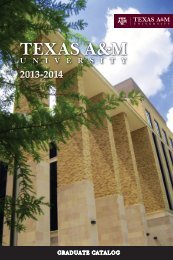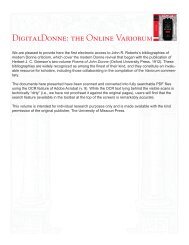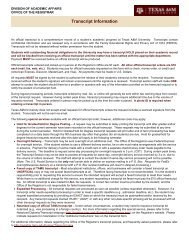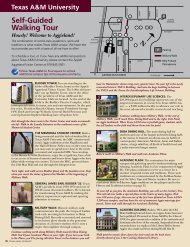A Homology Theory for Hybrid Systems: Hybrid Homology - CiteSeerX
A Homology Theory for Hybrid Systems: Hybrid Homology - CiteSeerX
A Homology Theory for Hybrid Systems: Hybrid Homology - CiteSeerX
You also want an ePaper? Increase the reach of your titles
YUMPU automatically turns print PDFs into web optimized ePapers that Google loves.
88A.D. Ames and S. Sastry2 Categorical <strong>Hybrid</strong> <strong>Systems</strong>Up to this point, a hybrid system has been defined to be a tuple which is a collectionof spaces subject to certain relations given by maps between these spaces.A set of vector fields or flows is also included in the definition. To better understandhybrid systems, we consider this collection of spaces and this collection offlows separately; the <strong>for</strong>mer is referred to as a hybrid space or H-space and thelatter is a “flow” on this H-space. The motivation <strong>for</strong> this is derived from dynamicalsystem theory where there is a clear distinction between the “underlyingtopological space” of a dynamical system and a flow on that space. Parallelingdynamical systems, a hybrid system is obtained by adding a collection of flowsto an H-space.In this section, we give the classical definition of an H-space and then proceedto give a categorical definition of an H-space in terms of a small category and afunctor; the advantage of the categorical definition of an H-space is that it is notonly more general but also more concise. We then proceed to give the definition ofa hybrid system utilizing the categorical framework developed—a hybrid systemis also defined by a small category and a functor. These constructions will beessential in developing a homology theory <strong>for</strong> hybrid systems, although this seemsto be only the first step in exploring their power.H-Space. Define a classical H-space (short <strong>for</strong> classical hybrid space) as a tupleH class =(Q, E, D, G, R)where– Q = {1, ..., m} ⊂Z is a set of discrete states.– E ⊂ Q × Q is a set of edges which define relations between the domains. Fore =(i, j) ∈ E, we denote the source of e by s(e) =i and the target of e byt(e) =j.– D = {D i } i∈Q is a set of domains where D i is a topological space.– G = {G e } e∈E is a set of guards, where G e ⊆ D s(e) is also a topological space.– R = {R e } e∈E is a set of reset maps or transition maps; these are continuousmaps from G e ⊆ D s(e) to R e (G e ) ⊆ D t(e) .The subscript “class” indicates that this is a “classical” definition, meaning thatthis definition is one of the most commonly used ones (cf. [5]). For a classical H-space the pair (Q, E) is an oriented graph (technically a pseudograph), so we canwrite a classical H-space as a tuple H class =(Γ, D, G, R). The graph Γ =(Q, E)is referred to as the underlying graph of the H-space.We can demand that the collection of topological spaces D be a collection ofmanifolds M = {M i } i∈Q , that the maps R be a collection of smooth embeddingsR S , and that the set of guards be a set of smooth manifolds, G M , such thatG M e is an embedded submanifold of M s(e) . In this case we call the H-spaceG class =(Q, E, M, G M ,R S )asmooth classical hybrid space or a smooth classicalH-space or a classical G-space. This more restrictive definition is the startingpoint <strong>for</strong> much of the literature on hybrid systems.



